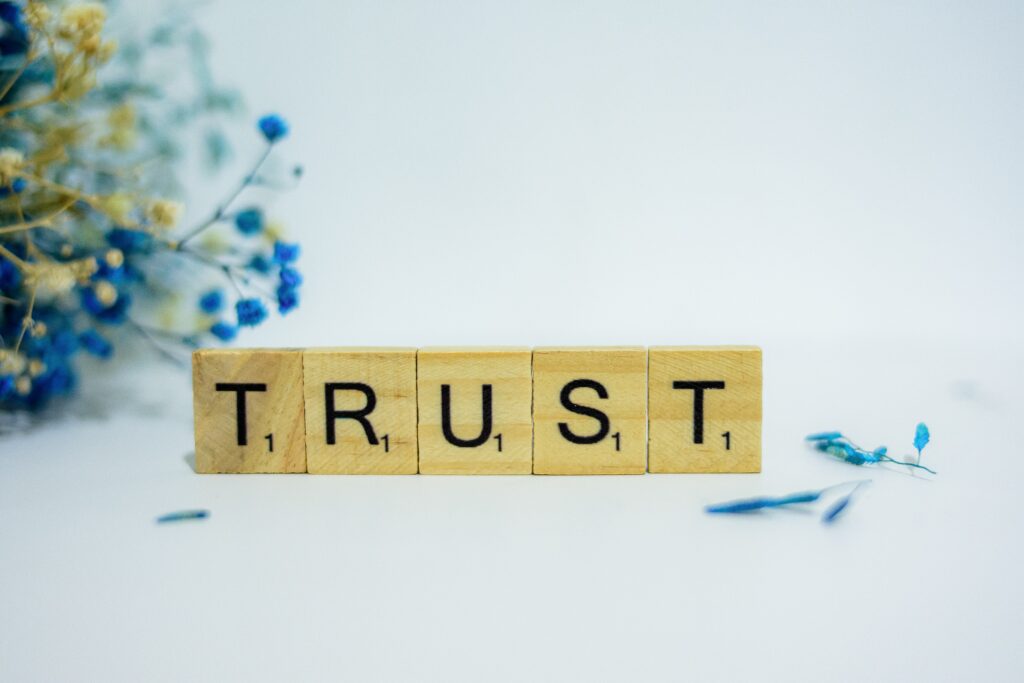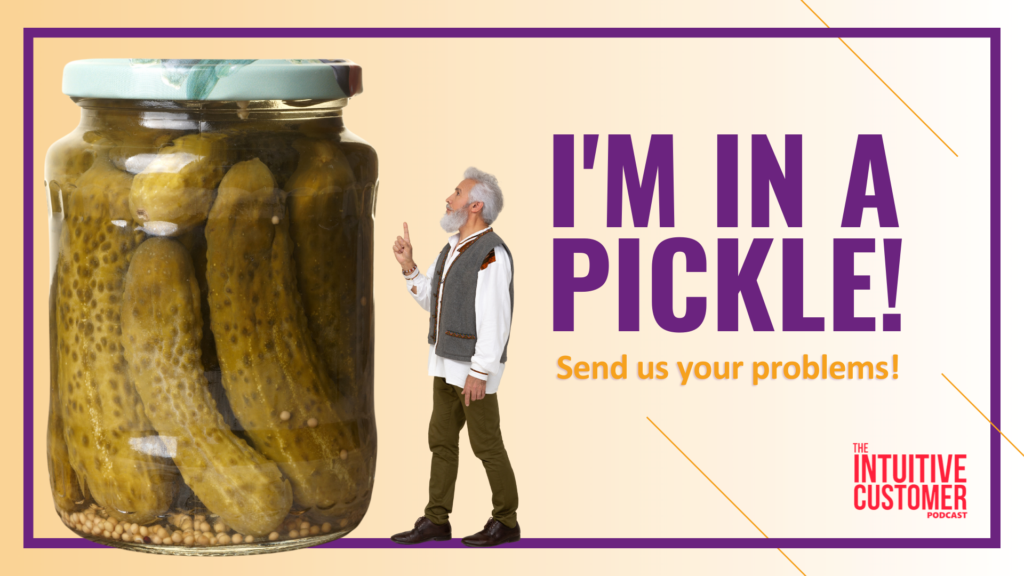How do you know if someone trusts you? Is it what they share with you? How do they spend their time with you? Is it the language they use when talking about you or what they do when you aren’t around?
I would argue it’s all of the above. But, also, these things are true about people’s trust in your life or customers on your sales reports.
On a recent podcast, one of our listeners contacted us with a Business Pickle with which he wanted our help. Bob has recently joined a company, managing the relationship of a large customer account with a long history with Bob’s company. Bob is hoping to learn what level of trust exists between the two companies and wanted to know if we had any tips for determining that.
So, today, I thought I would share the four things we advised Bob to do here on our NL, too. Then, we will talk about measuring trust and how these principles extend to other necessary measurements in companies. (We covered some of this information in another podcast, The Five Rules for Creating Behavioral Experiments.)
The Four Things You Can Do to Discover if Customers Trust You
1. Ask the customer directly. Sure, it’s direct and a little obvious, but it might work. Also, this approach works for many emotional questions you have. Ideally, you ask through a survey. Also, request it at strategic moments over time. For example, immediately following interactions with customers might show you moments in the customer journey where the trust scores increase or decline more than others.
 However, there is a good news/bad news bit about measuring things. First, the good news; it’s easier to design a survey than you might think at first. While there are things that can go wrong, and experience does improve your surveys, writing surveys does not require a lot of special training. So, jump in and start and learn from what you do.
However, there is a good news/bad news bit about measuring things. First, the good news; it’s easier to design a survey than you might think at first. While there are things that can go wrong, and experience does improve your surveys, writing surveys does not require a lot of special training. So, jump in and start and learn from what you do.
Now the bad news; the real challenge is what to do with the data. When they ask directly, people make one mistake: they assign meaning to the number they get back, but it has none. Instead, the number you get over time gives it meaning. So, for example, if you score a 4 out of 5 for trust on surveys, that is not as meaningful as scoring 4 out of 5 after scoring a 3 two months earlier.
Comparing your results across different points in the customer journey and various customer segments is also meaningful. But, again, the comparison of direct measures is the most useful and not necessarily as raw data itself.
2. Ask the customer indirectly. In addition to asking the customer if they trust you, you can also ask questions that seem unrelated to trust that also tell you if they trust you. Why would you do this? People may have reasons for not wanting to come out and say they don’t trust you, even in a survey.
For example, you can ask customers to imagine the company and its three largest competitors were people. Then, you ask them which of the four people the customer would most likely loan $5? Or you could ask the customer who they would call if they needed someone to come and pick them up during an emergency? These indirect questions sound silly, but they permit people to give an honest answer where it doesn’t feel like they tell you they don’t trust you.
One way we do it is to give customers magazines and ask them to pick out an image that portrays how they feel about the organization. Then, when they do, we ask why they picked it. The insights you get you would never get if you asked them standard questions.
3. Use behavioral measures. You can also look at what your customer is doing to determine if they trust you. This type of customer data can take many forms. For example, declining purchased level data clarifies that there’s a problem, and trust might be one of the causes. If you combine different data about customer behavior—what they say about you in reviews, how they interact with your social media, and channels like this—you see firsthand what they talk about regarding trust issues.
You can also get specific in interpersonal interactions if you have this kind of data. For example, can you observe how your customers interact with your employees? Do they seem hesitant? Do they have closed-off body language? Do they have their arms crossed a lot? Are they not making eye contact? If you can video customers, you can look for micro-expressions where people might have flashes of a distrustful expression, skepticism, or fear (even if they cover it up very quickly). So, people might be giving you access to data already on trust that you haven’t analyzed yet.
Human beings communicate a lot through their body language. And therefore, we are picking up all of these little signals all the time. So, the issue is codifying it effectively.
4. Create an experiment. The idea that you can measure trust using experiments is an idea that goes back decades. Economists and behavioral economists have been doing it for a long time. As a result, there’s a whole classification of trust experiments designed and run repeatedly.
 For example, the classic trust game has two players, and you give Player A $20. Then, Player A can give as much money as they want to Player B. Whatever Player A gives gets tripled, and Player B can decide how much of that money to give back to Player A. So, this trust game is about reciprocation.
For example, the classic trust game has two players, and you give Player A $20. Then, Player A can give as much money as they want to Player B. Whatever Player A gives gets tripled, and Player B can decide how much of that money to give back to Player A. So, this trust game is about reciprocation.
They experiment with this game in different ways, e.g., same gender, different gender, acquaintances or strangers, multiple rounds. The Brits put a version of it on TV called Golden Balls.
The idea of these trust games is they could be a jumping-off point for Bob. We would need to customize the experiment to apply to Bob’s business to make something like this work for his questions about trust. Without more information, I recommend looking for points in the customer journey where trust is crucial and zero in on those. Are there things that you can measure here that would indicate trust?
I hope that helping Bob was helpful to you, too. Maybe you have a different pickle in your customer strategy? If so, please tell us about it at www.beyondphilosophy.com./pickle. Perhaps we can feature you on the podcast and help you, too.

There you have it. No promotions, no gimmicks, just good information.
Think reading is for chumps? Try my podcast, The Intuitive Customer, instead. We explore the many reasons why customers do what they do—and what you should do about it. Subscribe today right here.


